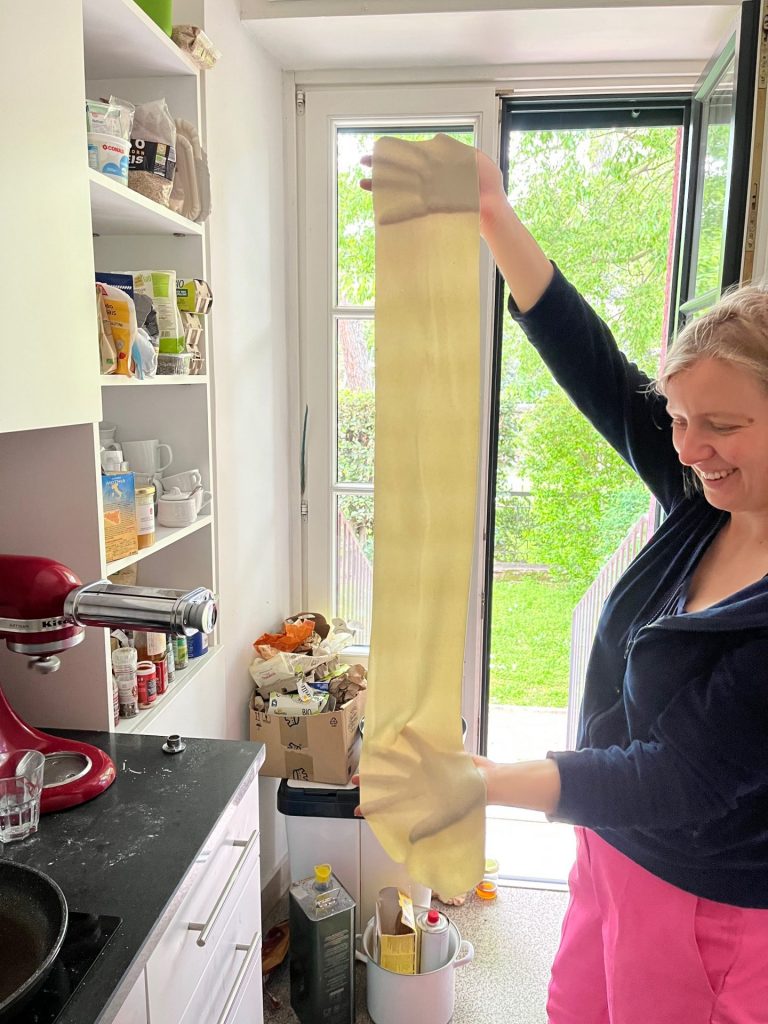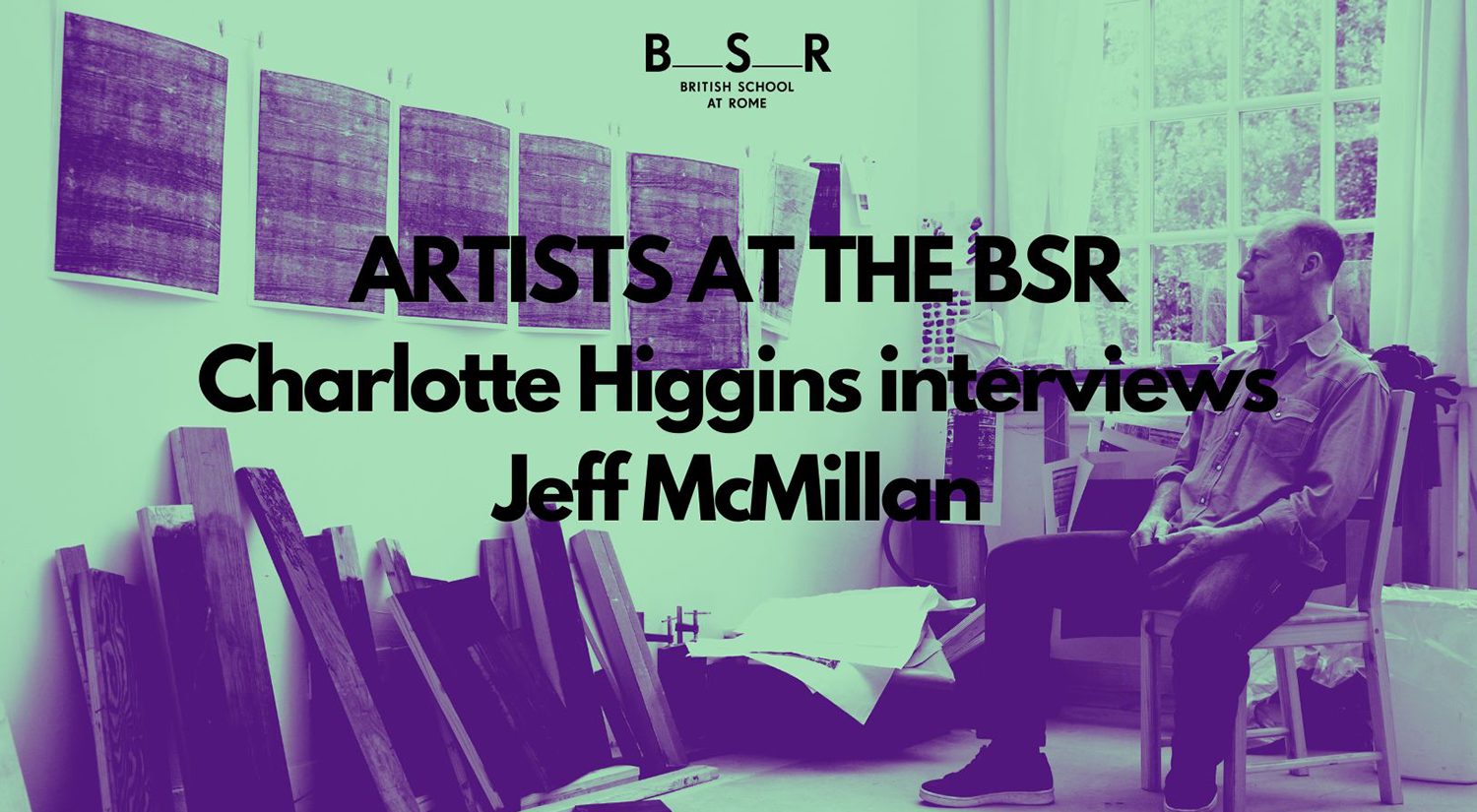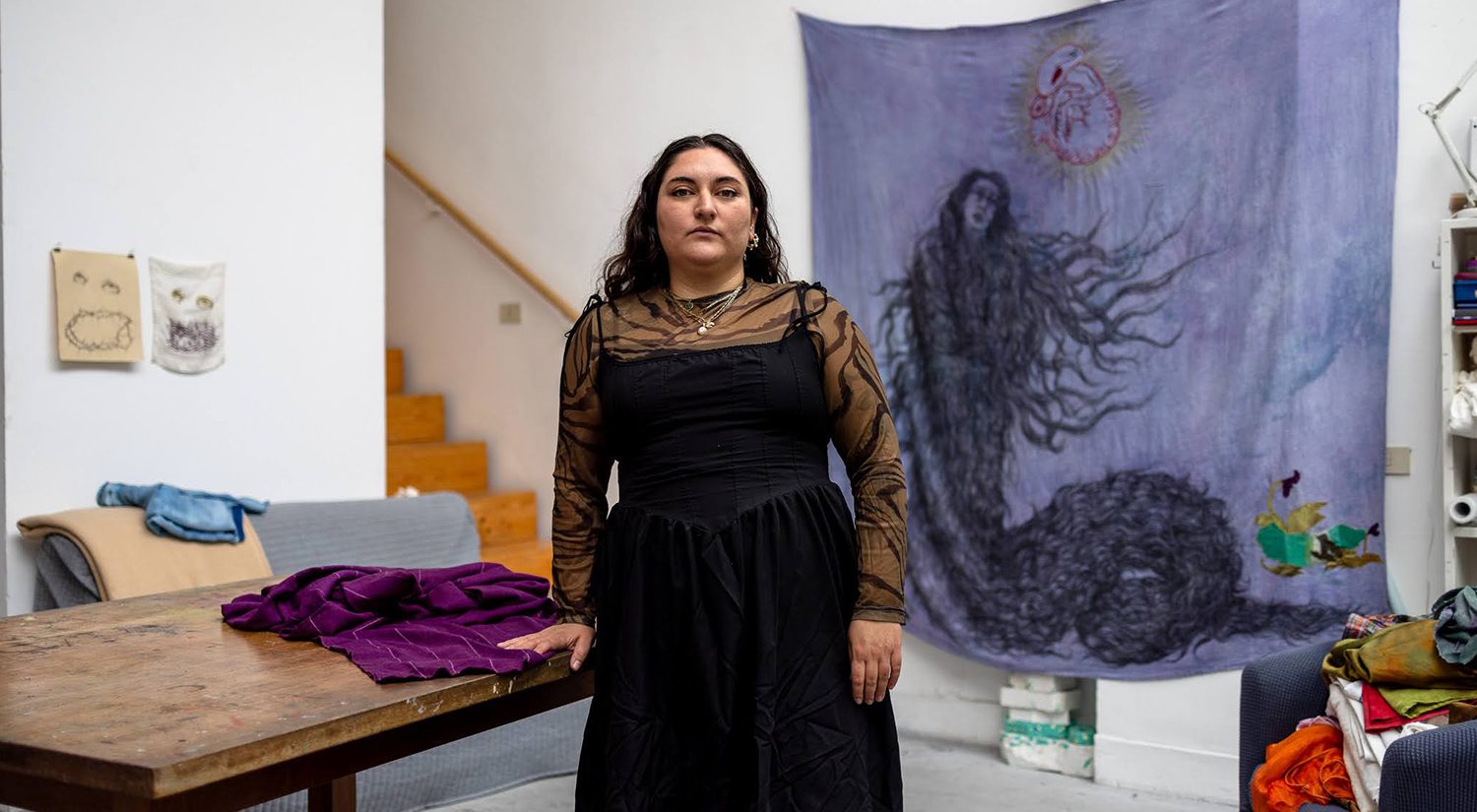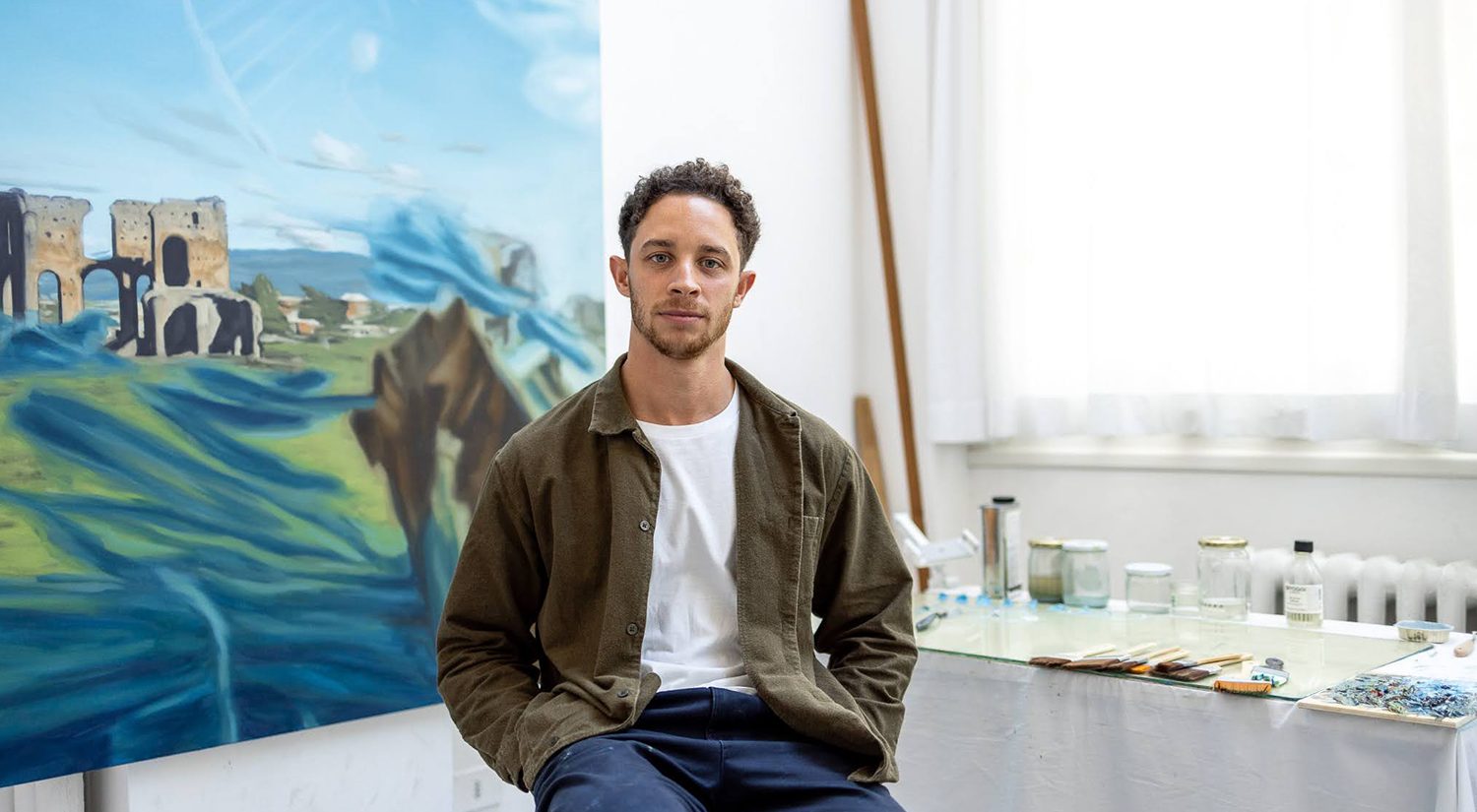An interview with Laura White, Ampersand Foundation Fellow, in which she speaks about the work she has produced during her residency at the BSR from April – June 2023, ahead of the Summer Open Studios.
In the past months you have spent so much time cooking with Liza Dieckwisch, fellow at the German Academy in Rome, who has become your cooking partner and food collaborator here in Rome. Could you tell us more about your experiences together?
Both finding it frustrating not to be able to access kitchens in Rome; due to health and safety restrictions; to get hands on experience with food, such as to be a volunteer in a pizzeria or work in a bakery; we decided to meet up and cook together, bringing our wealth of hands-on material experience into the kitchen to see where it takes us.
Liza and I meet every few weeks to cook. We have made traditional Italian bakes, such as sfonliatelle and castagnaccio, and explored the innards of a lamb to make coratella and sausages. We have made garum (salty fishy sauce), pasta, bread, jam and lots of other experimental food with a range of locally sourced ingredients, pushing and challenging our skills and learning from each other.
She has a similar approach to food as I do, engaging with food in different and experimental ways, then absorbing the experiences into our art practices.
Cooking with Liza is great, we are very much in tune with each other now, having cooked so much together. By our fourth cooking session I noticed how comfortable we were in each other’s company. There was a moment when I caught us passing something, I can’t remember exactly what it was – a knife, a spoon, maybe a pasta cutter, but it was something that before that day we would have had to ask each other for, but no words were needed, not even eye contact. We work in a very small kitchen and have found a way to weave around each other with ease.

I notice how we are attracted to different aspects of cooking. I mostly want to experience handling the material, to explore my hands and body in relation to the different ingredients, techniques and processes – rolling pasta, kneading dough, slicing meat. Whereas Liza is seeing the materials often as images, taking close up photographs of dripping honey and rising dough.
Each day we cook together we do a lot – cooking up to 8 -10 dishes a day. Because there is no pressure, no expectation, we are free to experiment and make mistakes, and on the whole most things work out. We often make things up and improvise, changing things as we go along. What is a recipe other than a starting point to explore. We learn so much from each other. Liza has an extensive knowledge of plants, such as edible flowers and types of fruit, and I have worked a lot with dough and have acquired a breadth of hands-on skills. We both ‘literally’ bring a lot to the table. Also, we probably wouldn’t have cooked in Rome to this extent, if we had not come together. Our epic cooking days have included, Vegetable Day, Offal Day and multiple Dough Days…
I have documented these cooking days on my Tenderfoot website – DIWO – Cooking Together https://tenderfoot.co.uk/cooking-together/
So what next ? It does not end in Rome, and we are already planning to cook together in our respective counties, learning from each other the techniques and recipes we use at home. We will see how this evolves, who knows! I don’t feel this collaboration has to become anything more than ‘cooking together’, allowing our experiences to seep into our studio practices in whatever form that takes! However, we are talking about what it means to share these experiences with others, perhaps a food pop up of some kind!

During your time in Italy, you attended food workshops on how to make cheese, pasta, mozzarella, bread and so on. What kind of impact is this different type of knowledge having on your work as a sculptor?
I have been experiencing and learning a range of hands-on food skills, from cheesemaking, pasta, pizza, jam and honey production. I have taken courses and worked with a range of experts and enthusiasts, learning about artisan food products and processes.
A few weeks ago I went on a cheese course in Tuscany and Emilia Romagna, a six day course visiting cheese producers in the mountains of Tuscany – goat, sheep and cow cheese – such as pecorino and ricotta, and in Emelia Romagna for Parmigiano Reggiano. Watching, listening, touching, smelling, and tasting cheese. Being exposed to a material in this focused and revealing way, helps me to understand it, how and why it behaves the way it does. For example, the milk from a goat each day will be slightly different, depending on the goats body temperature, mood, what it eats and where in the lactation cycle it is. Also, the milk will be altered depending on whether it has travelled far to the dairy, pumped through pipes or sloshed around in a milk truck. Everything matters and has an impact on the milk, even before the process of cheese making commences.
Handling materials is very important for me, such as to explore how a material might stretch, rip, fold, split, expand, shrink… Every material behaves differently, so to experience materials (cheese) in this way, to spend time working with those who engage with the material daily and want to share their knowledge, gives me an insight and means to further my evolving tacit knowledge, so I can continuously explore and challenge the materials I use in the studio when making artwork. Also, the wealth of information around any material, its social and political impacts also feed my practice. I have observed the lives of cheese producers swaying to government regulations, influenced by fashions and respond to climate change.
When I work with materials in my studio I allow all this gathered experience to influence my material negotiations, but not in a literal way, it is more subtle. For example, watching cheesemakers gather in their arms the curds that have settled and knitted together at the bottom of the cheese pot, the gentle way they handle the curd as if it were living, a material to be taken care of. This has influenced the way I think about my materials, what it means to take care and look after them when making sculpture, in particular the dough sculptures I am producing here in Rome, not only does the drying dough need constant attention, there is an intimate connection between myself and the dough which is personal.
It might be the way an artisan cheesemaker uses their whole body to push down on the curd in the mold to squeeze out the excess liquid, or the speed they stir the whey when heating to make ricotta, all these actions are specific, choreographed, while also adapted and improvised, and always reveal aspects of the individual character of the handler/maker.
Attending food workshops is for me an important part of my practice, the fieldwork that informs what I do in the studio. I’m continually developing a non-linguistic speech of the body through my material encounters, exploring different ways to handle stuff, influenced by these experiences.

Laura’s writing and fieldwork go to www.tenderfoot.co.uk
Laura’s artwork go to www.laura-white.co.uk











